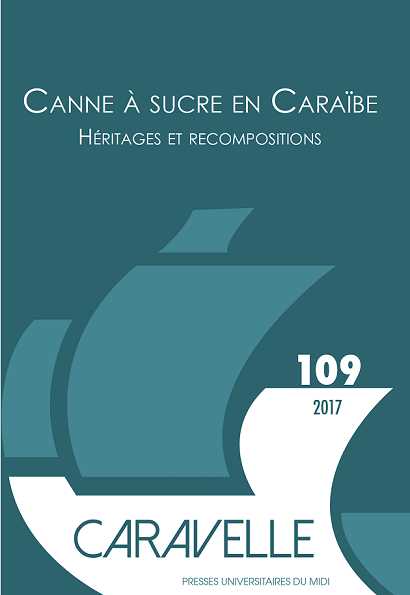
Caravelle—Cahiers du monde hispanique et luso-brésilien, number 109 (2017) is now available online. This issue centers on the theme « Canne à sucre en Caraïbes: Héritages et recompositions, » following the trajectory of sugar cane and slavery in Caribbean history and culture.
Description: Associated with a particularly coercive system, few agricultural speculations have generated a socio-spatial configuration as specific as that of sugar cane. A substantial product, relatively cheap, but with high demand, the production costs needed (and still need) to be as low as possible, with export points closest to the production sites. Historical conditions, as well as the conditions of production (with strict rules, excluding any other activity) made sugar cane one of the products that allowed for the establishment of large-scale slave-holding plantations, as African workforce was considered the least expensive. This system derives from the one put in place in the Mediterranean world since the Middle Ages. However, its expansion—one may even say its development—has never been as obvious as in the Caribbean. It is there that slavery engendered profoundly unequal specific social relations and a culture generating discourses, images, representations, which go from the political to the literary.
Articles include:
“Présentation: Canne à sucre en Caraïbes. Héritages et recompositions” by Modesta Suárez and Jean-Christian Tulet; Jean-Christian Tulet’s “La fin de l’empire du sucre dans les îles de la Caraïbe;” Révolution et migration: la route du sucre dans les Amériques,” by Nathalie Dessens; Sandra Monet-Descombey Hernández’s “Poétiques mémorielles et imaginaire collectif: canne à sucre et émancipation en Caraïbe;” Gema Areta Marigó’s “La sabiduría del taita: Chinolope y Lezama Lima;” Javier Ramírez Juárez’s “La reproducción social de los campesinos cañeros en el valle de Izúcar, Puebla, México; ” Michel Lesourd’s “En Atlantique, dans le parfum du grogú: la valorisation de la canne à sucre aux îles du Cap-Vert;” and “¿Como una caña en el cañaveral? Breve muestrario (América Central y Caribe hispanófono)” by Dante Barrientos Tecún and Marie-Christine Seguin.
[Many thanks to Peter Jordens for bringing this item to our attention. Excerpts translated by Ivette Romero. For original information, in French, see https://journals.openedition.org/caravelle and https://journals.openedition.org/caravelle/2409]]
